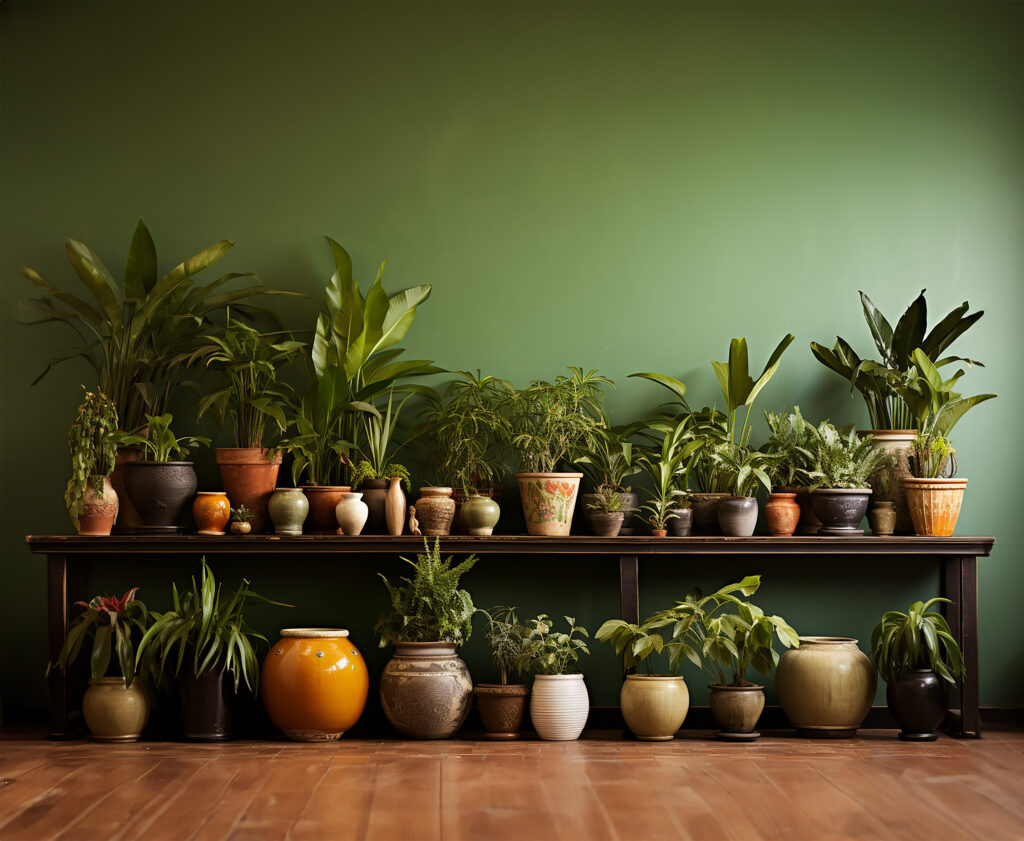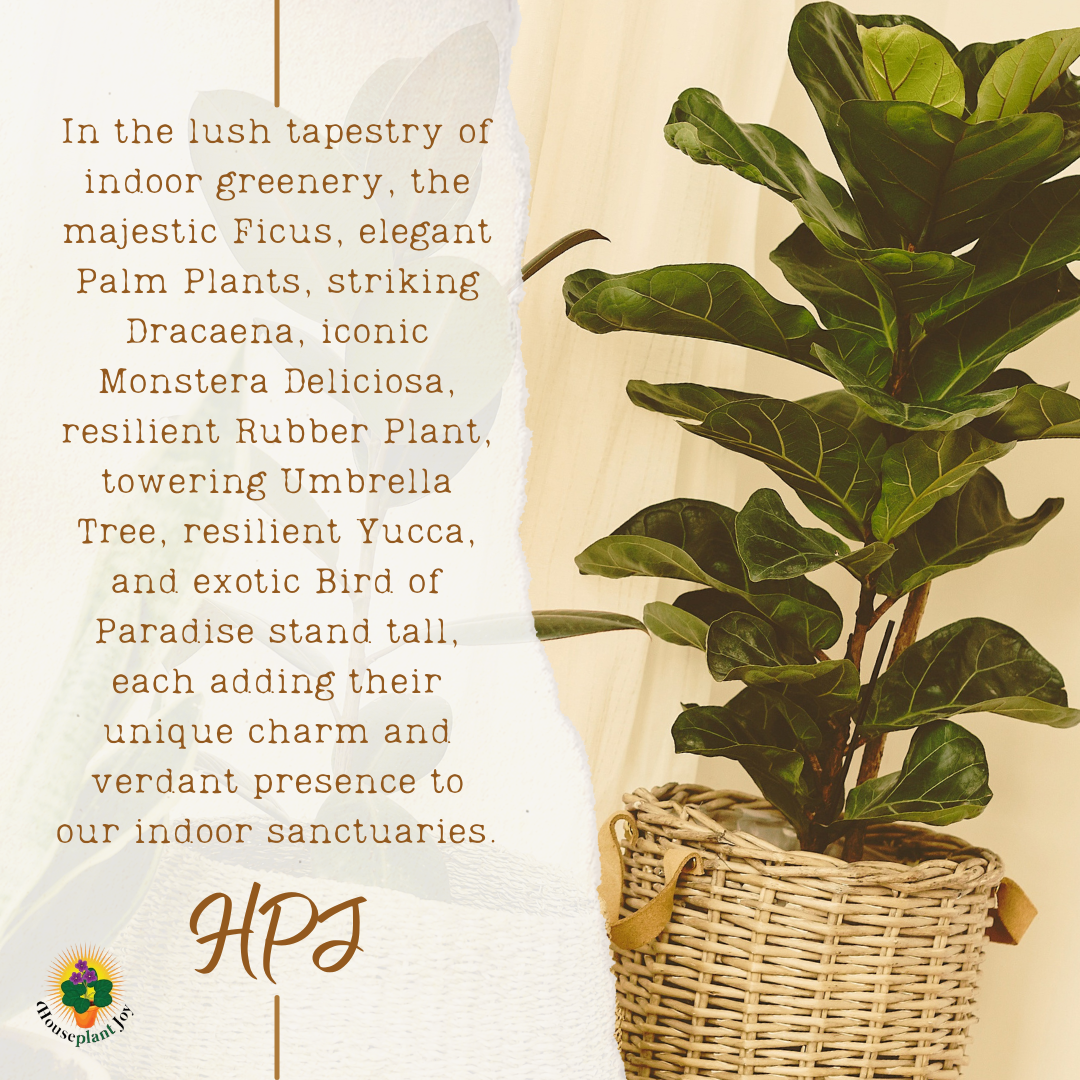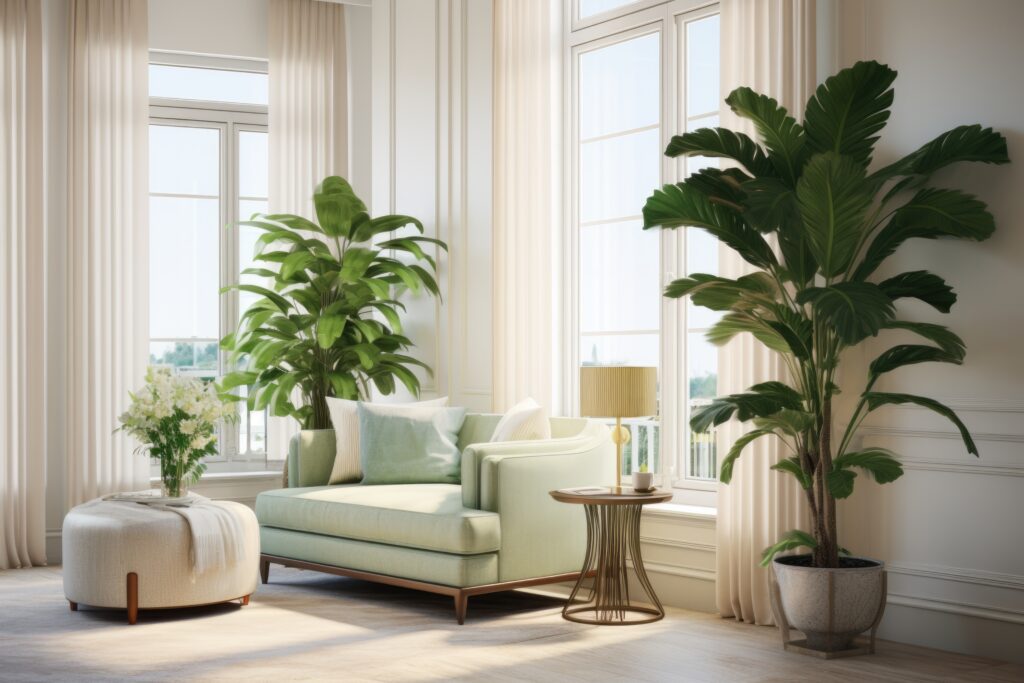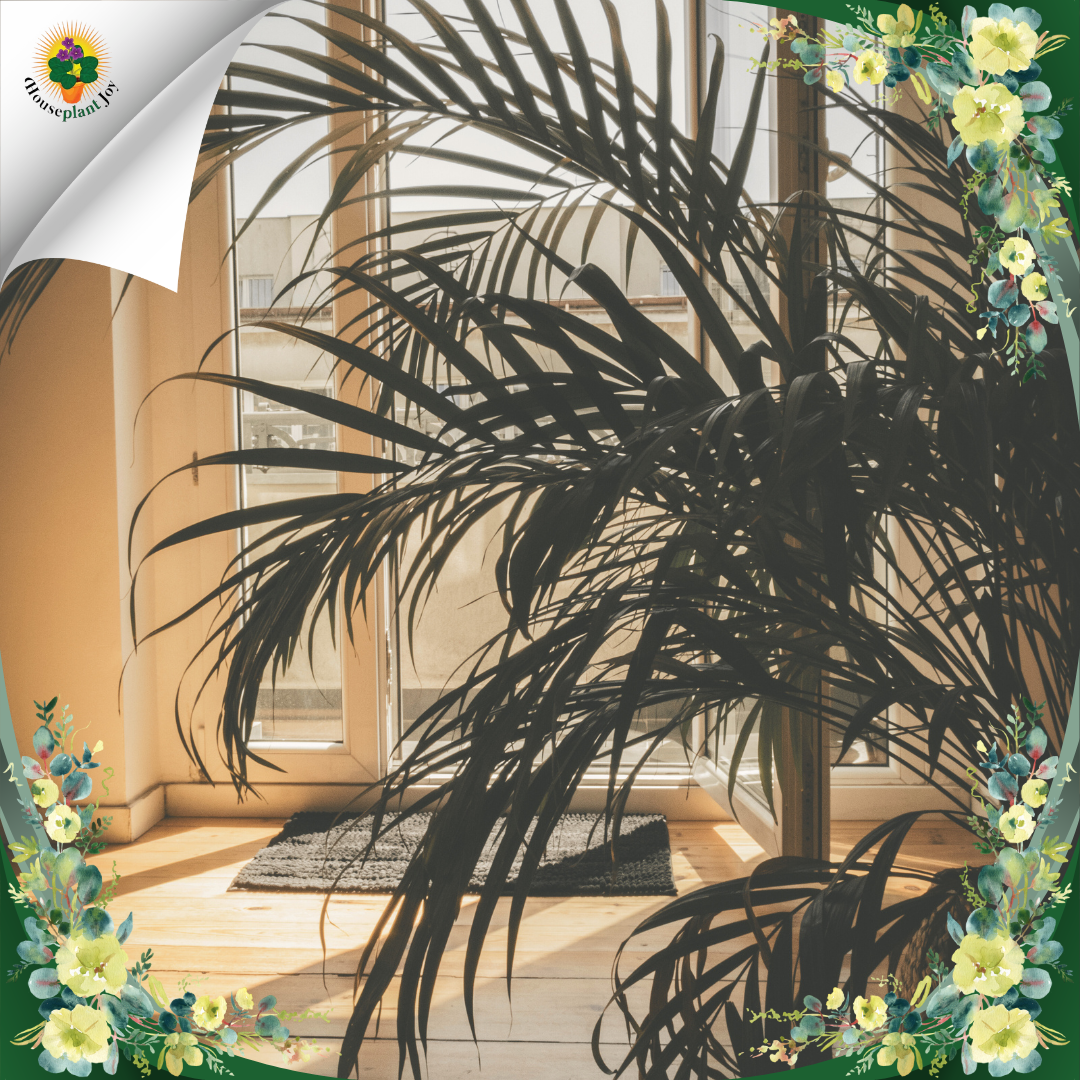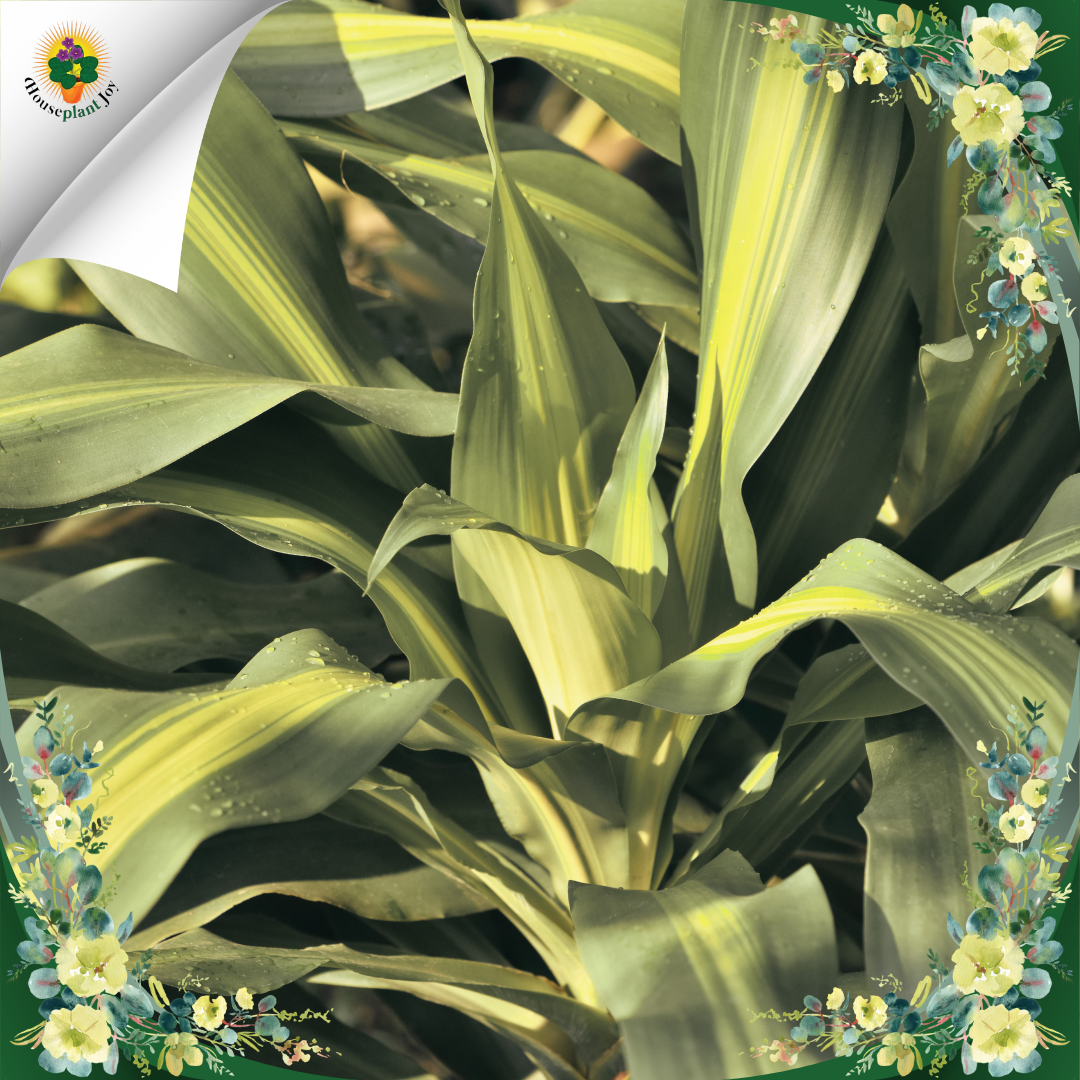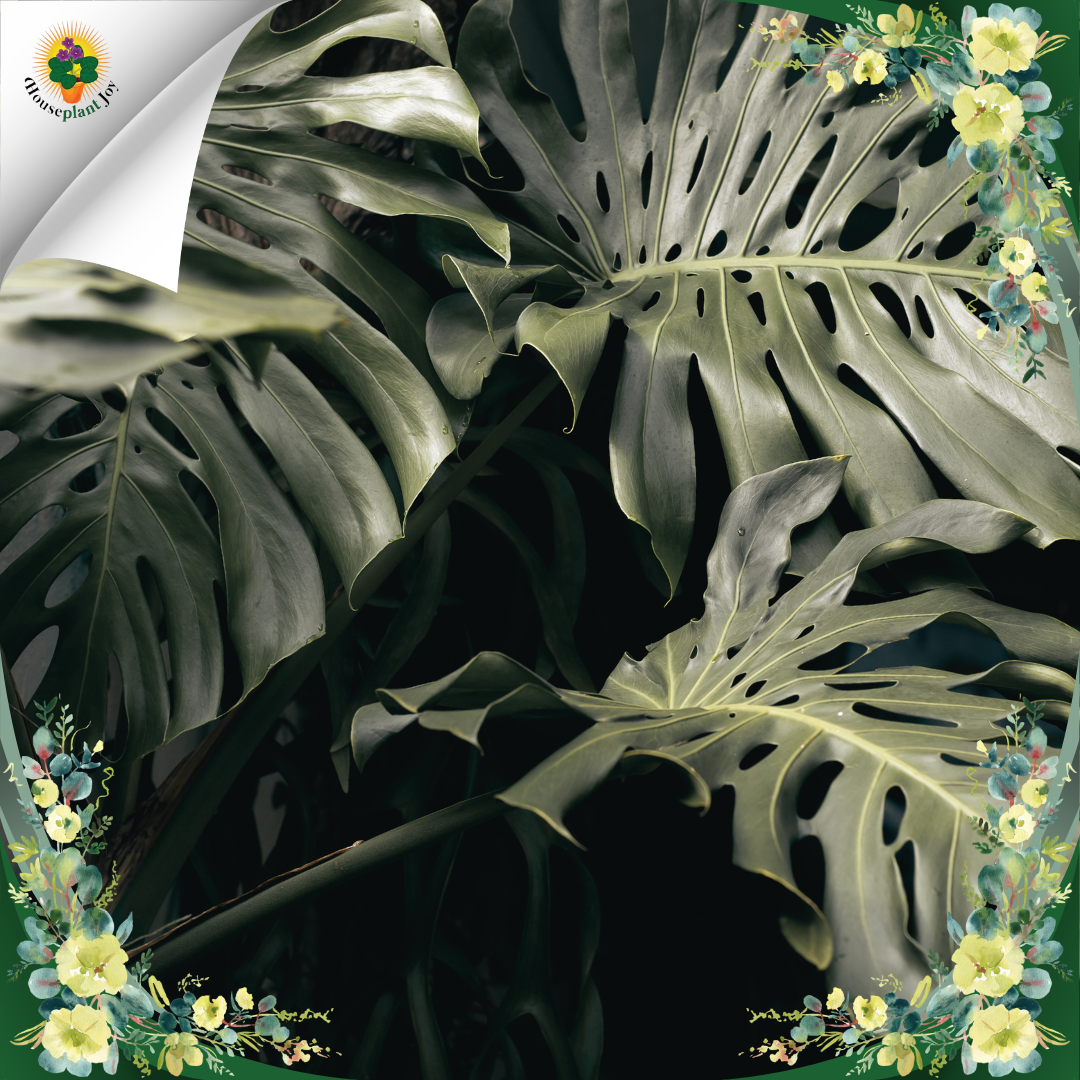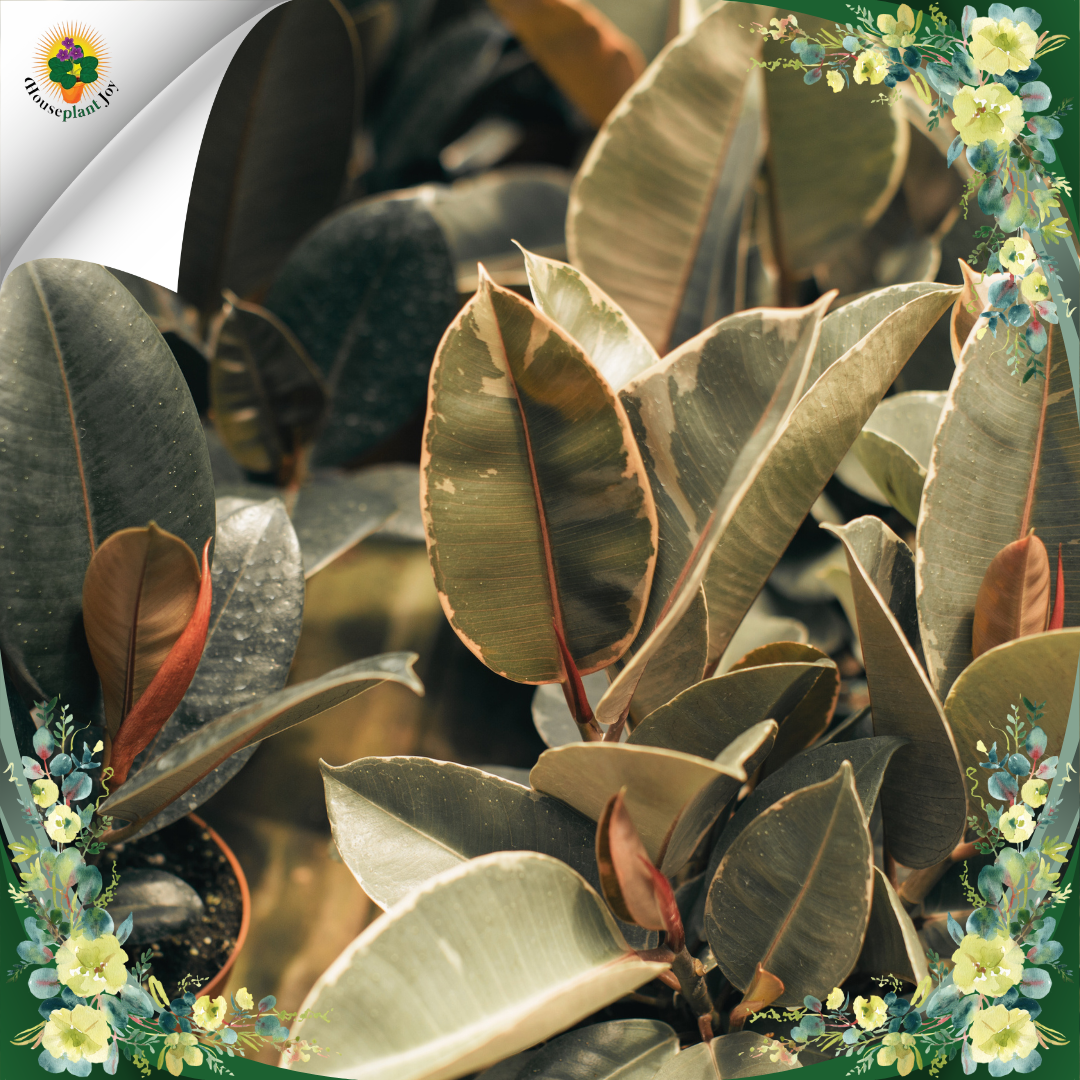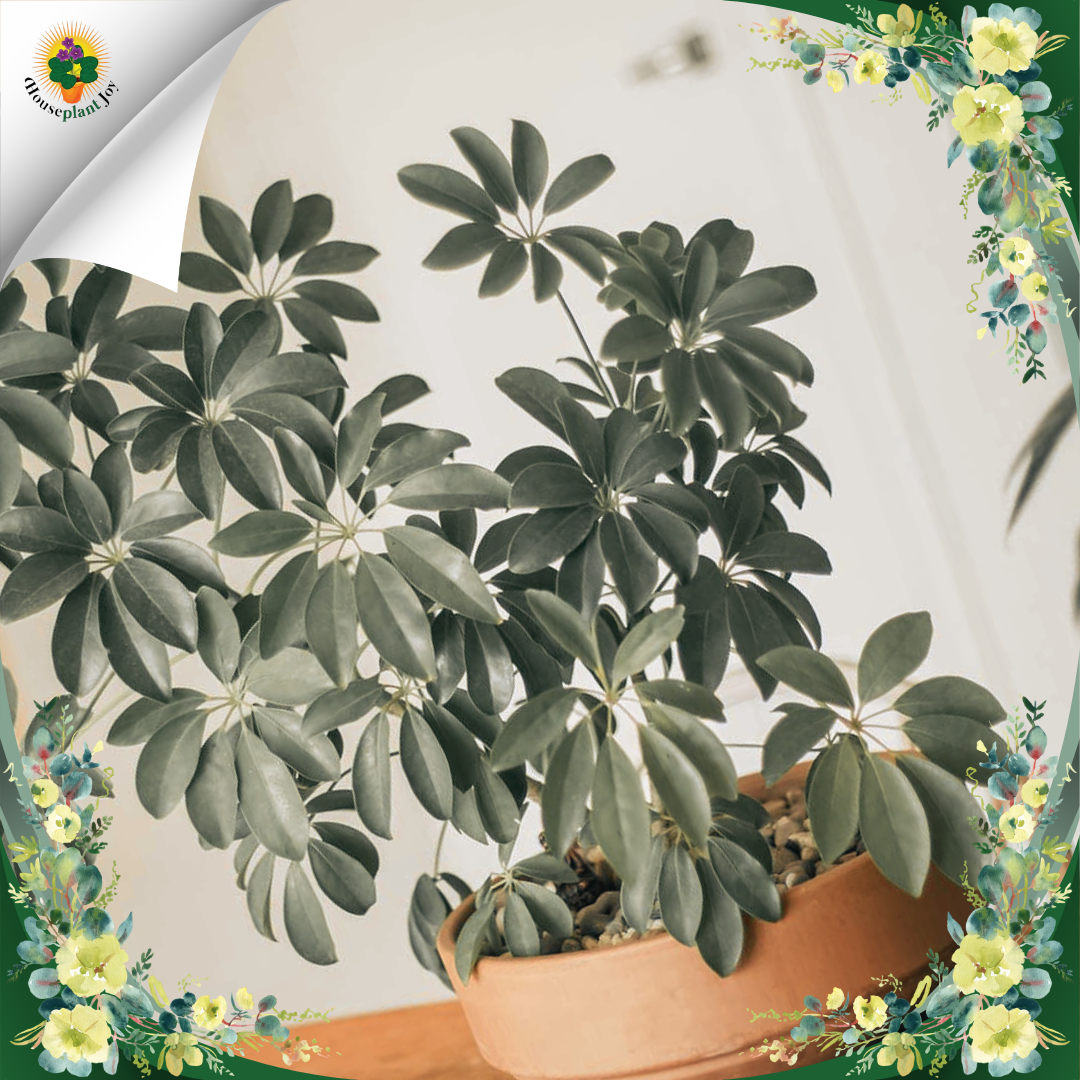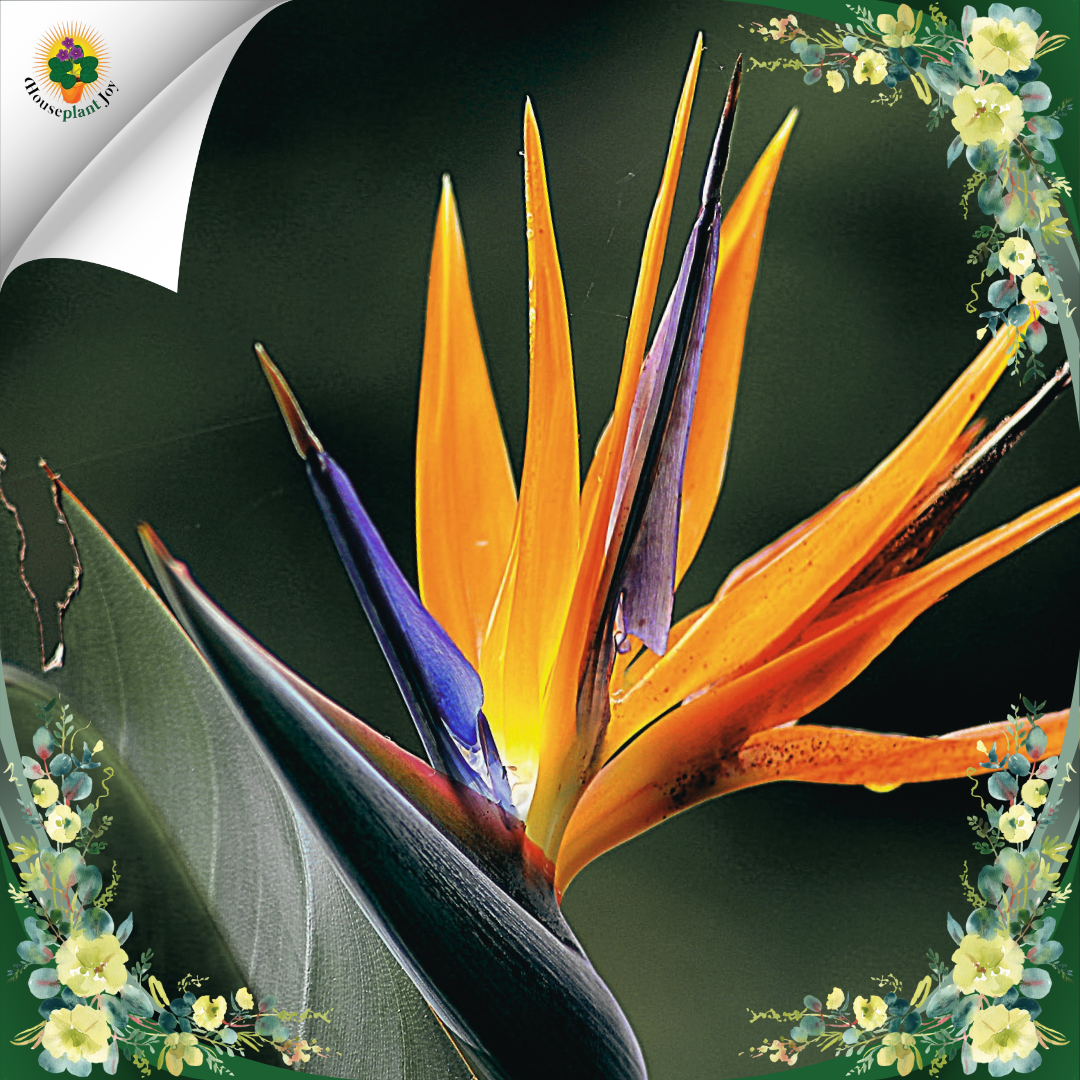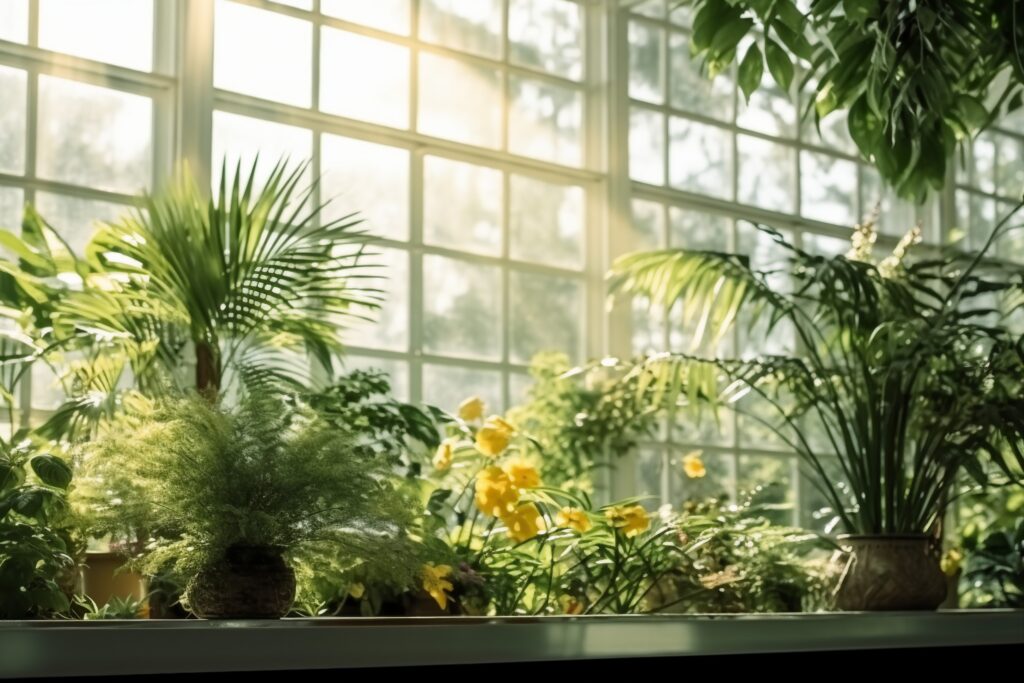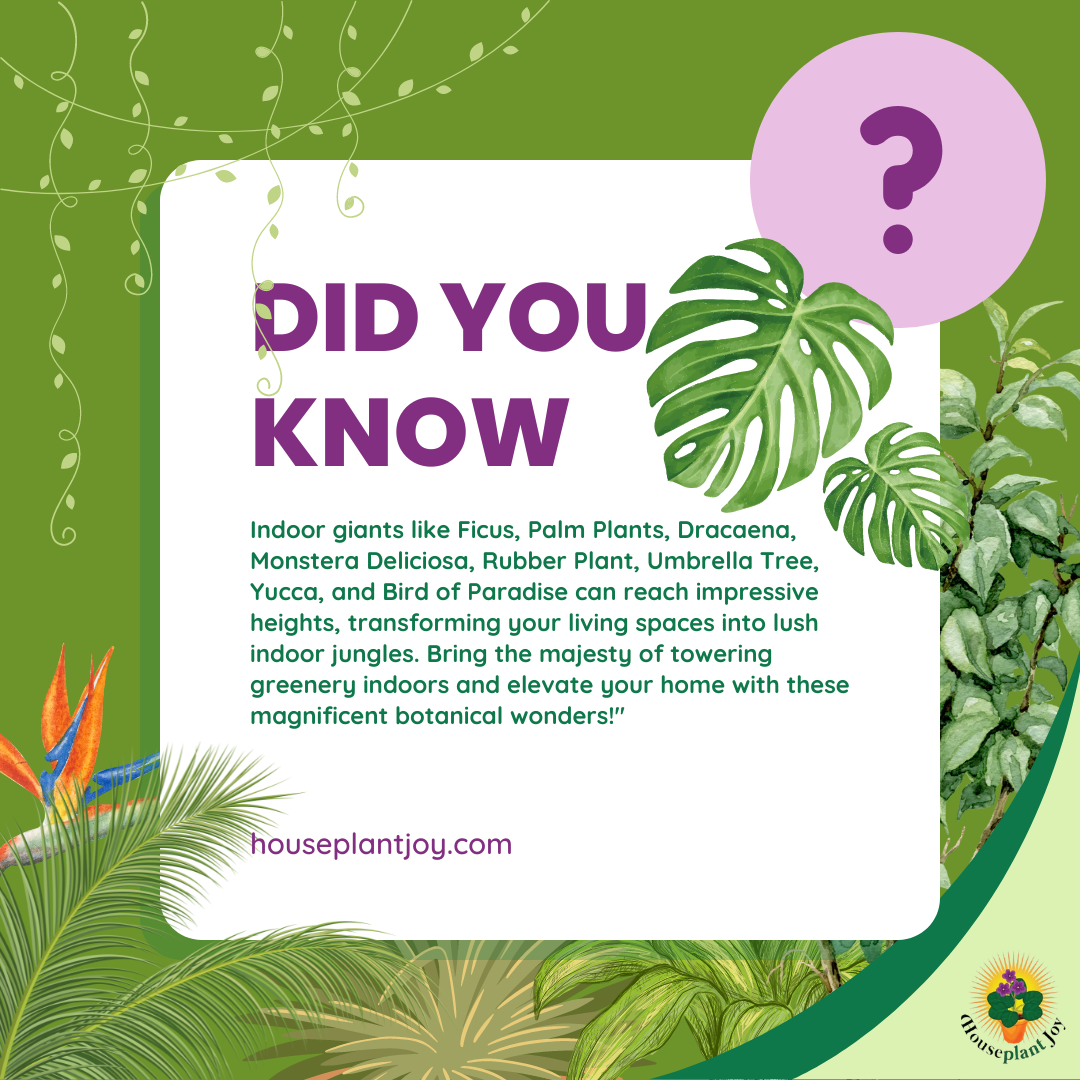HousePlantJoy is supported by our audience. When you purchase through one of our links, we may earn a small affiliate commission. As an Amazon Associate I earn from qualifying purchases. Your cost is not affected.
==================
Houseplants that grow tall command attention and bring a touch of natural grandeur to any indoor setting. Welcome to the ultimate guide to adding vertical interest to your indoor space. In this comprehensive overview, we’ll explore 10 types of houseplants renowned for their impressive height, each offering both visual allure and functional benefits. Whether you’re a seasoned plant parent or just starting your botanical journey, join us as we discover the perfect tall houseplant to transform your home into a lush sanctuary of tranquility and style. Let’s embark on a journey to find your indoor giants!
Houseplants That Grow Tall: Exploring 8 Distinct Types
Tall houseplants bring nature’s majesty indoors, becoming vibrant focal points in living spaces. Beyond aesthetics, they enhance air quality and instill calm.
Maintaining them is achievable, even for non-green thumbs. Various species thrive indoors, each with unique requirements.
Find a tall plant that suits your home—high humidity, low light, or neglect. Explore the types for a personal, gratifying selection experience.
Key Takeaways:
Tall houseplants beautify spaces while purifying air and regulating humidity.
Choose plants matching your home’s conditions for easy care.
Regular maintenance ensures healthy, thriving indoor giants.
The Benefits of Tall Houseplants
Tall houseplants can transform living spaces, adding both aesthetic appeal and functional benefits. They serve as natural air purifiers, with many species capable of filtering indoor pollutants.
A study by NASA lists several houseplants that are particularly good at this, including varieties of dracaena, which can grow up to six feet tall.
Here are key benefits tall houseplants offer:
- Visual Impact: Their height makes them natural focal points that can enhance the decor and feel of a room.
- Space Definition: They can act as dividers, subtly separating different areas in open-space layouts.
- Improved Air Quality: Through the process of photosynthesis, houseplants absorb carbon dioxide and release oxygen, helping to freshen the air.
- Humidity Control: Houseplants release moisture vapor, which can increase humidity levels and benefit respiratory health.
Moreover, tall houseplants might contribute to a psychological sense of well-being by bringing an element of nature indoors.
For example, the Kentia palm not only adds beauty but can also evoke a tranquil, tropical atmosphere.
A simple table representing the benefits:
| Benefit | Description |
|---|---|
| Visual Appeal | Adds height and drama to decorate spaces. |
| Spatial Definition | Works as a natural space divider. |
| Air Purification | Filters indoor air pollutants and releases oxygen. |
| Humidity Regulation | Maintains indoor humidity levels, aiding in respiratory health. |
Incorporating tall houseplants requires consideration for their care.
While some tolerate low light, others, such as the Yucca plant, thrive in bright, indirect light.
Watering needs also vary, with plants like the corn plant preferring dry soil between waterings.
When choosing a tall houseplant, one should assess the light and space available to ensure it thrives, bringing maximum benefits to its environment.
Ficus Varieties for Height and Beauty
The right Ficus plant can serve as a striking centerpiece in any room, capable of reaching impressive heights with lush, ornamental foliage. These varieties combine robust growth with aesthetic appeal for those seeking vertical interest in their indoor gardens.
Ficus Lyrata
Ficus lyrata, commonly known as the Fiddle Leaf Fig, is prized for its substantial growth and violin-shaped, glossy leaves.
It stands out as an interior design favorite, soaring to 50 feet in its natural habitat but more commonly seen at 6 to 10 feet indoors.
This species prefers bright, indirect light to maintain its splendid leaf display. Proper care can ensure those with the ambition for a taller indoor tree are not disappointed; the Fiddle Leaf Fig can become a true testament to one’s gardening prowess.
More on this species’ growth patterns and care instructions can be found at House Grail.
Ficus Elastica
The Ficus elastica, or Rubber Plant, showcases broad, dark green leaves with an inherent sheen.
Typically reaching up to 10 feet inside the home environment, it can grow significantly taller under optimal care.
A highlight for this variety is its versatility; the Rubber Plant thrives with varying levels of light, though a balance of light and shade is preferable for sustaining its vigorous height and robust foliage.
Information regarding its adaptability can be obtained from Petal Republic.
Ficus Benjamina
Lastly, Ficus benjamina, known as the Weeping Fig, is characterized by its arching branches and small, glossy leaves, which create an elegant, curtain-like effect.
Indoor specimens commonly reach up to 6 feet tall, making them ideal for rooms with limited space yet ample vertical clearance.
This variety’s graceful growth is complemented by a preference for consistent light conditions and relative ease of maintenance. Guidance on nurturing these trees to their full potential in an indoor setting is available through Proven Winners.
Palm Plants for Vertical Interest
When looking to add height and a tropical flair to an indoor space, certain palm plants stand out for their ability to grow tall and create striking vertical interest.
Majesty Palm
Majesty Palm (Ravenea rivularis), with its impressive stature and graceful fronds, makes a bold statement.
It thrives in bright indirect light and consistently moist soil, reaching heights of up to 10 feet indoors.
Its large, arching leaves add an elegant touch to any room. Find detailed care instructions on The Spruce.
Areca Palm
The Areca Palm (Dypsis lutescens), also known as the Butterfly Palm, is known for its feathery and arching fronds.
As a relatively fast-growing palm, it can reach heights of 6 to 7 feet indoors.
For the best growth, provide ample sunlight and water thoroughly but allow the soil to dry between waterings. More on its care can be read at Leafy Place.
Lady Palm
The Lady Palm (Rhapis excelsa) stands out for its dense clumps of broad, dark green fronds and adaptability to various light conditions, including low light.
This palm can attain a height of 6 feet indoors and prefers well-draining soil and partial shade.
To maintain its beauty, trim the older growth and keep its environment humid. Comprehensive care tips are available on The Spruce.
Towering Dracaenas
Dracaenas are a diverse group of plants that often reach great heights, making a bold statement in any home. They are known for their striking forms, easy care requirements, and air-purifying qualities.
Dracaena Marginata
Common Name: Dragon Tree
- Height: Up to 6 ft
- Leaf Color: Green with red edges
The Dracaena Marginata, or Dragon Tree, has tall, skinny trunks topped with arching leaves that create a statement in vertical spaces.
They prefer bright, indirect light for the best display of their characteristic red-tipped leaves.
Dracaena Fragrans
Common Name: Corn Plant
- Height: Up to 15 ft
- Leaf Color: Dark green
A towering example of the genus, Dracaena Fragrans can reach heights of up to 15 feet indoors.
It features broad, shiny green leaves and has the potential to produce fragrant flowers, though bloom in houseplant specimens is rare.
Dracaena Reflexa
Common Name: Song of India
- Height: Up to 18 ft
- Leaf Color: Green with yellow or creamy margins
Dracaena Reflexa is celebrated for its tall growth and flexible care requirements.
Its leaves feature a beautiful variegation that stands out in indoor environments. This species thrives in bright, indirect light but will also adapt to lower-light conditions.
Lush Monstera Deliciosa
The Monstera deliciosa, often referred to as the Swiss cheese plant, is a striking houseplant known for its large, glossy leaves. It can grow impressively tall, making it a statement piece in any interior space.
Caring for Monsteras
Light: Monsteras thrive in bright, indirect sunlight. Direct sunlight can burn their leaves, so it’s important to provide filtered light.
Water: They prefer their soil to be evenly moist. A good rule of thumb is to water when the top inch of soil feels dry.
Humidity: As tropical plants, Monsteras benefit from higher humidity levels. Regular misting or a humidifier can keep them happy.
Soil: A peat-based aerated potting mix works best, allowing roots to breathe and promoting drainage.
Monstera Growth Patterns
Indoor Growth: Inside, these plants typically reach heights of 3-5 feet, but with proper care, they can grow even taller.
Outdoor Growth: Outdoors, in optimal conditions and climates, they can soar to over 10 feet tall.
Their growth can be supported by use of stakes or trellises, as Monsteras tend to grow in a climbing or vining pattern.
Rubber Plant: A Timeless Tall Plant
Rubber Plants are a popular choice for indoor spaces due to their impressive height and lush, broad leaves. They can grow up to 6 feet indoors, offering a striking green presence in any room.
Rubber Plant Care Tips
Light: Rubber Plants thrive in bright, indirect sunlight but can tolerate lower light conditions. It’s important to rotate the plant regularly to ensure even growth.
Water: They require consistent watering—allow the top 2 to 3 inches of soil to dry out between waterings. During winter, water less frequently to prevent oversaturation.
Temperature: The ideal temperature range is between 50°F to 85°F, avoiding sudden temperature drops and cold drafts.
Varieties of Rubber Plant
- Ficus elastica ‘Robusta’: This variety is known for its wide, glossy leaves.
- Ficus elastica ‘Tricolor’ or ‘Ruby’: Recognized for its leaves of cream, pink, and green that turn red when new.
- Ficus elastica ‘Decora’: It sports dark green leaves with a shiny finish.
Umbrella Tree for Dramatic Flair
The Umbrella Tree, known for its lush foliage and architectural form, becomes a centerpiece in any room, reaching impressive heights indoors. This section will explore two striking varieties that exemplify height and visual interest for indoor gardens.
Schefflera Arboricola
Common Name: Dwarf Umbrella Tree
Height: Up to 4-5 feet indoors
Features:
- Leaves: Shiny, oval, and arranged in a circle, resembling an umbrella.
- Growth Habit: Dense and bushy, can be pruned to maintain size.
The Garden Lovers Club details this variety. It is compact yet offers a dramatic presence. It’s known for its ability to adapt to indoor environments, making it suitable for a range of lighting conditions.
Schefflera Actinophylla
Common Name: Octopus Tree, Amate
Height: Can grow over 6 feet indoors
Features:
- Leaves: Long, glossy, and larger compared to S. Arboricola, arranged in clusters like tentacles.
- Growth Habit: Tall and tree-like, it brings an exotic touch to interiors.
The larger Schefflera Actinophylla thrives indoors with adequate light and room to grow, embodying a bold, tropical aesthetic. This species is ideal for those wishing to make a statement with vertical interest in their home or office.
Yucca: The Desert’s Skyscraper
Yucca plants command attention with their majestic height and striking sword-like leaves. Ideal for those seeking a vertical element in their indoor gardens, yuccas are not only appealing but also low maintenance.
Yucca Care Essentials
Light: Yuccas thrive in bright, direct sunlight. A south-facing window is ideal, providing them with the intense light they need.
Water: These plants prefer a “dry-out” period between waterings. Water generously, but infrequently, only when the top inch of soil is dry to the touch.
Soil: A well-draining soil mix is crucial for yucca plants. Use a cactus or succulent mix to prevent water retention and root rot.
Temperature and Humidity: Yuccas are tolerant of a range of temperatures but prefer a range of 60-80°F (15-27°C). Average home humidity levels are typically suitable.
Popular Yucca Species
Yucca elephantipes: Commonly known as the spineless yucca or giant yucca, it’s distinguished by its smooth, leathery leaves and can reach impressive indoor heights.
Yucca aloifolia: Named for its aloe-like leaves, this species often showcases a purplish tint and can bloom with white, bell-shaped flowers in maturity.
Each yucca species adds its unique form of desert-inspired elegance to an indoor collection, standing tall as a natural statement piece.
Bird of Paradise: Nature’s Artwork
The Bird of Paradise plants, known for their architectural leaves and dramatic flowers, replicate the appearance of a bird in flight, making them a remarkable and statuesque addition to any indoor space.
Strelitzia Reginae
Strelitzia reginae, commonly referred to as the orange Bird of Paradise, boasts vibrant orange and blue flowers reminiscent of an exotic bird’s plumage. Native to South Africa, they typically reach up to 4 feet indoors. The Strelitzia reginae is the most common type found in homes.
Strelitzia Nicolai
In contrast, Strelitzia nicolai, often named the giant white Bird of Paradise, is characterized by white flowers with a hint of blue and resembles a banana plant. Growing up to 20 feet tall, the S. nicolai displays broad leaves and makes for an impressive indoor tree in spaces with ample room.
Caring for Tall Houseplants
When nurturing tall houseplants, ensuring they receive adequate light, water, and nutrients is crucial. Regular pruning and maintenance are also essential to their health and appearance.
Lighting Requirements
Each tall houseplant has unique lighting needs, ranging from low to high intensity. The Corn Plant (Dracaena fragrans), for instance, prospers in most light conditions but should avoid direct sunlight. On the other hand, varieties like the Yucca Plant require bright, indirect light to thrive. It is important to determine the specific light requirements for each plant to promote vigorous growth.
Watering and Feeding
The frequency of watering should be aligned with the houseplant’s type and the environment’s humidity. For example, Corn Plants are drought tolerant and prefer the soil to dry out completely between waterings. Nutritional needs also vary, and using a balanced fertilizer during the growing season can support robust growth. Plants like the Key Lime benefit from regular feeding during their growing periods.
Pruning and Maintenance
Pruning is vital for maintaining the shape and health of tall houseplants. Removing dead or yellowing leaves allows the plant to focus its energy on new growth. For certain plants like the Umbrella Plant, cutting back can encourage a fuller shape. Regular dusting of leaves is also important to allow the plants to photosynthesize efficiently.
Houseplants That Grow Tall: Discovering Your Indoor Giants
In conclusion, our exploration of tall houseplants has unveiled a realm of natural grandeur and transformative beauty. From the majestic ficus varieties to the tropical elegance of palm plants and the bold statements of towering dracaenas, each species offers a unique blend of visual allure and functional benefits.
Nurturing Nature’s Giants
Caring for these indoor wonders requires thoughtful attention, from understanding their lighting and watering needs to providing regular maintenance. Yet, the rewards are immeasurable, as they not only enhance our living spaces but also contribute to improved air quality and a sense of well-being.
Whether you’re a seasoned plant parent or just starting your botanical journey, may this guide inspire you to create a lush sanctuary of tranquility and style in your home. With the right tall houseplants adorning your indoor oasis, you’ll command attention and infuse your surroundings with the timeless beauty of nature’s giants.
Frequently Asked Questions
This section answers common questions about tall houseplants, providing guidance on care, selection, and maintenance.
What are the best tall indoor plants for low light conditions?
Large indoor plants like the Corn Plant thrive in low light conditions, making them perfect for spaces away from bright windows.
How can I care for large indoor plants and trees effectively?
To care for large indoor plants, ensure adequate space for growth, provide steady moisture without overwatering, and give them a balanced fertilizer during their growing season.
What are some tall, narrow plants suitable for indoor placement?
The Yucca Plant is tall and narrow, suitable for indoor corners, providing height without taking up much floor space.
Which tall houseplants are considered the easiest to maintain?
Plants such as Philodendrons are easy to maintain and can grow tall, requiring minimal care like weekly watering and indirect sunlight.
Are there any outdoor plants that can be adapted for tall indoor growth?
Some outdoor plants, like the Rubber Plant, can adapt to indoor environments. With proper care and placement inside the home, they can grow tall.
Delve into the World of Houseplants: Connect with Us Across Platforms!
Embark on a journey of green inspiration and community camaraderie! At Houseplant Joy, we’re more than just enthusiasts; we’re a family united by our love for lush foliage and vibrant blooms. Dive into our captivating content, explore insightful product reviews, and engage with fellow plant lovers like never before.
Join the conversation on Facebook, where we share tips and tricks for nurturing your indoor oasis. Immerse yourself in the visual feast on Instagram, where every snapshot tells a story of botanical bliss. Pin your favorite finds on Pinterest, and let your creativity bloom alongside ours.
Stay updated with the latest trends and discussions on Twitter, where our tweets spark lively exchanges and valuable insights. Dive deeper into the world of houseplants with our informative videos on YouTube, where every click brings you closer to plant perfection.
And for those moments when you need a quick dose of joy, hop over to TikTok, where we share bite-sized glimpses of our green world.
So, what are you waiting for? Join us in celebrating the beauty of houseplants across platforms and let’s grow together!


